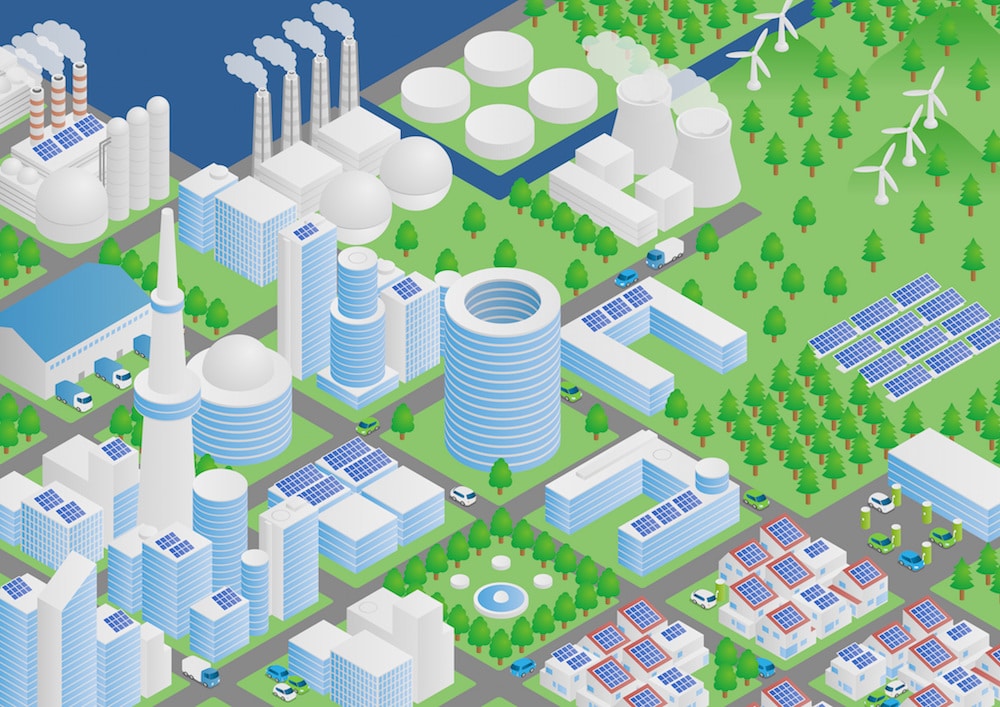A 2013 Memoori Report outlined that one of the main drivers for interfacing and integrating Smart Grid with Smart Buildings is to take advantage of distributed energy that is available in the many hundreds of thousands of smart buildings and industrial sites around the world. It stated that this development should be achieved through energy service companies.
Over the past two years the case for Distributed Energy Resource Management Systems (DERMS) has increased dramatically. These are software-as-solution platforms capable of managing a wide range of resources to help integrate renewable energy and smart buildings to the grid, while flattening load curves and controlling prices.

In the north-eastern state of Massachusetts, the utility company Unitil told regulators that the spread of distributed energy resources made managing the system increasingly complex. The state suffers from some of the highest electricity prices in the US and faces persistent reliability threats from storms and freezing winters. In response, regulators last year directed investor-owned utilities to file grid modernization plans and time varying rate proposals.
“As the penetration density of distributed energy resources continues to increase on the grid, the utility as the grid operator has less insight into the real time conditions of the system”, Unitil told regulators.
At the moment, Unitil cannot discern when individual distributed resources are operating, as many of them are net metered rather than having generation metered separately. “This makes engineering analysis and planning more difficult to develop models, which accurately depict the actual conditions”, the utility said in its filing. “DERMS will be used by grid operators and engineers for efficient grid operations and planning“.
While in Canada, New Brunswick Power, facing a goal of 40% renewable energy by 2020, has been trying to integrate more wind power into its portfolio. Their intermittent resources are often backed up by more traditional generation, but the utility installed a DERMS to capture large amounts of flexible load that existed on its system.
“The big transformation here is really a shift from generation following load, to load following generation,” said Michel Losier, who directs the PowerShift Atlantic project.
The system connects a network of customer loads to keep the power grid in balance, with a focus on equipment with storage capacity that can be run intermittently, such as temperature regulation, hot water heaters, thermal storage units and municipal water pumping stations. NB Power said that it was able to get 1,400 households and 30 business customers enrolled in the program. Demand-side loads are consolidated and used as a single dispatchable resource, in this case up to 17 MW of load.
Such demand response management is a crucial element of the power system, to meet environmental targets through better incorporating renewable energy and increasing efficiency across the system. Buildings, which make 40% of electricity consumption, must be central to the movement and smart buildings, which can provide energy generation, storage and consumption data, add a complex but potentially valuable new factor to the demand response discussion.
A report by MarketsandMarkets indicates that the demand response management system market will grow from $8.06 billion this year to $31.69 billion by 2020, a CAGR of 31.5%. North America is expected to remain the largest market for such systems.
In addition, just last week Obvious Ventures granted $3 million to Vancouver based Enbala Power Networks to help the start-up build out what investor Andrew Beebe called an "energy operating system for the grid".
Enbala previously raised $11 million in new equity financing earlier in the year. The company said it will use the funds to extend and enhance its technology platform, which aggregates, controls, optimizes and dispatches distributed energy in real-time, aka DERMS.
[contact-form-7 id="3204" title="memoori-newsletter"]
Meanwhile, Schneider Electric and IPKeys Technology are partnering on a demand response platform that the companies say will enable monitoring of IPKeys customers’ energy performance in near-real time, the tracking of energy savings and participation in automated demand response events.
IPKeys will contribute its EISS Online technology and Schneider will offer its Energy Profiler Online cloud-based customer engagement, energy management and demand response system. The platform will use the OpenADR 2.0b demand response protocol.
These projects, and the many more that are in design phase, suggest the early stages of a huge growth era in distributed energy and demand response management. Such development will be a boost for the whole modern power sector, at least the burgeoning energy storage and smart building industries.



